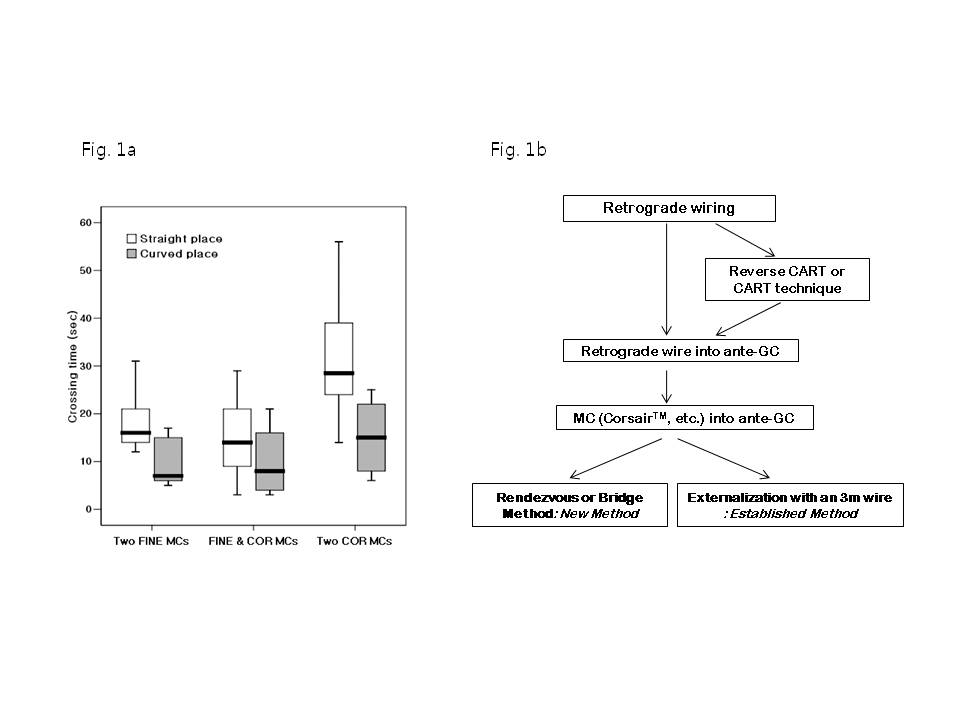| єя«•«ьљƒ : ±Єњђ
|
ЅҐЉцєш»£ - 550208 112 |
| Experience with a novel retrograde wiring technique for coronary chronic total occlusion |
| лПЩмХДлМАнХЩкµРл≥СмЫР мИЬнЩШкЄ∞лВік≥Љ¬є , лґАмВ∞лМАл≥СмЫРмИЬнЩШкЄ∞лВік≥Љ¬≤, Department of Cardiology, Kurashiki Central Hospital, Japan¬≥ |
| кєАлђінШД¬є , мЦіл£°нШЄ¬є, мЮ•нЩНм≤†¬є, л∞±нЭђк≤љ¬є, м°∞мЪ©лЭљ¬є, л∞ХмҐЕмД±¬є, л∞Хк≤љмЭЉ¬є, л∞ХнГЬнШЄ¬є, кєАмШБлМА¬є, м∞®кіСмИШ¬≤ , Hiroyuki Tanaka, Kazuaki Mitsudo¬≥ |
Objectives: Recent improvements in technique and equipment design, mainly initiated and developed in Japan, have contributed to an enhancement of the success rate of recanalization of coronary chronic total occlusion (CTO). We report our experiences with a novel retrograde wiring technique known as the Rendezvous Method. Background: To improve the success rate of recanalization of coronary chronic total occlusion (CTO), different strategies of retrograde approaches are currently available. Methods: From July 2007 to May 2010, 20 patients were treated using this technique in 2 medical centers. A fluoroscopic model of the technique was used for a more accurate evaluation. We simulated the Rendezvous Method using 2 microcatheters (MC: Finecross or Corsair) inserted into the 7 Fr guiding catheter (GC) and measured crossing time in both antegrade and retrograde fashion under fluoroscopy. Results: The majority of occlusion sites were in the proximal right coronary artery (50.0%). Most of the lesions had mild to moderate calcification (95.0%) and revealed an abrupt stump with a side branch at the occlusion site. The lesion length of the occlusion was relatively long (median 27.6 mm; range of 7.1 to 87.3 mm). 19 cases out of 20 attempts were successful with this technique (95% success rate). No adverse cardiac events occurred during hospitalization. In our experimental model, the mean crossing time was approximately 15 seconds and was shorter in curved than straight place (fig. 1a). Conclusion: The Rendezvous Method used during the retrograde approach can be performed as an alternative and possibly superior to the вАШexternalization method with 300 cmвАЩ after the guidewire and microcatheter have crossed the occluded proximal segment into the opposite guiding catheter. Therefore, we propose the following diagram for the successful completion of the retrograde approach (fig. 1b).
|
|
|
Warning: getimagesize(/home/virtual/circulationadmin/renewal/econgress/conference/abstract/img_files/cto.jpg.jpg) [function.getimagesize]: failed to open stream: No such file or directory in /home/virtual/circulationadmin/new/econgress/conference/manage/schedule/view_abstract.php on line 164

|
|





